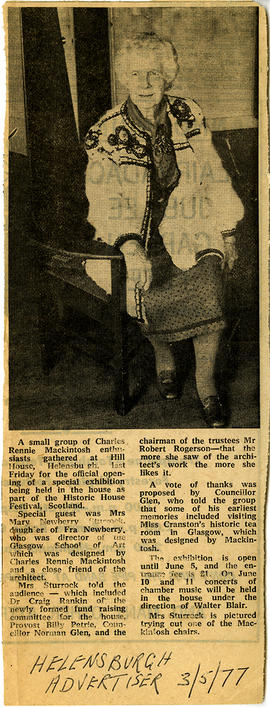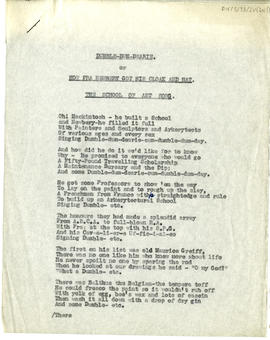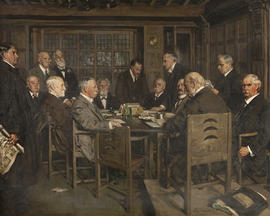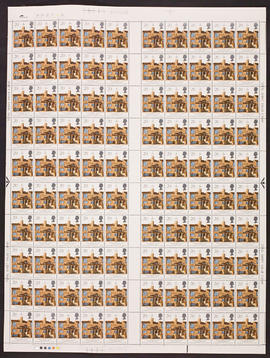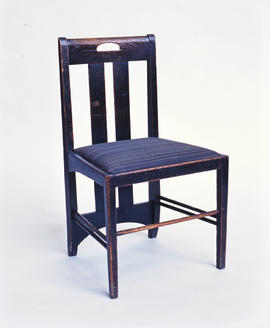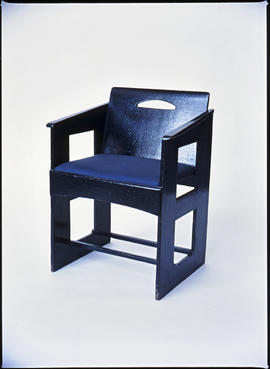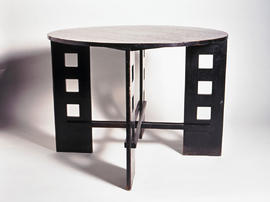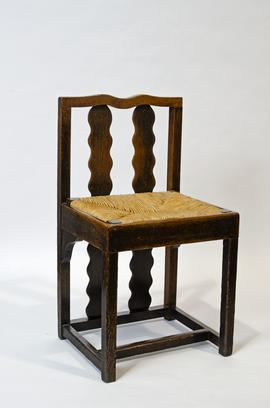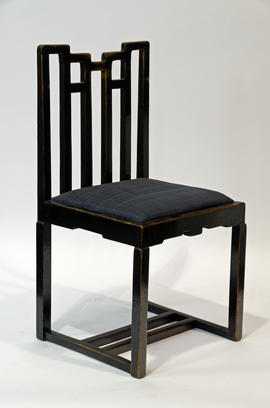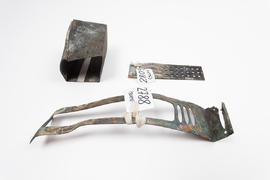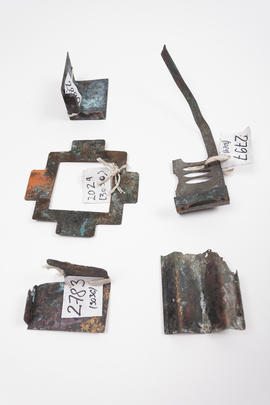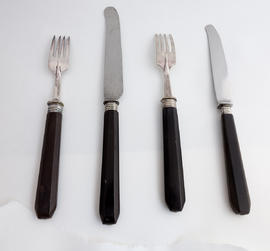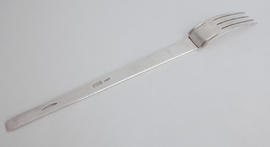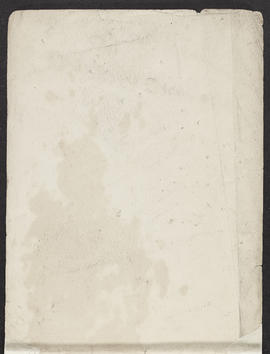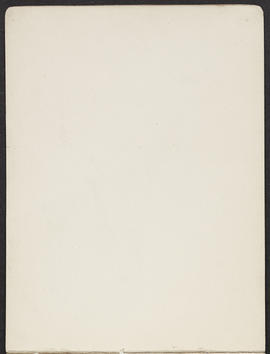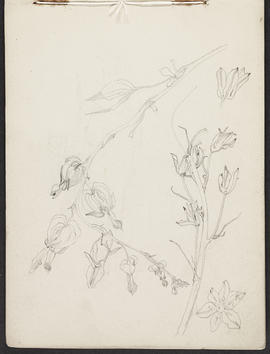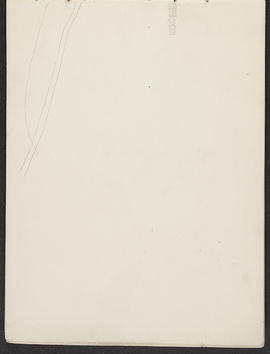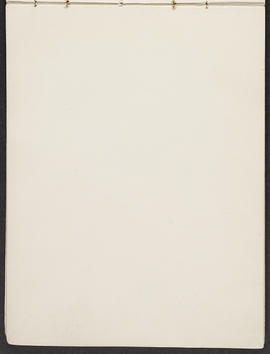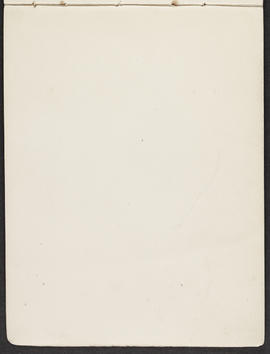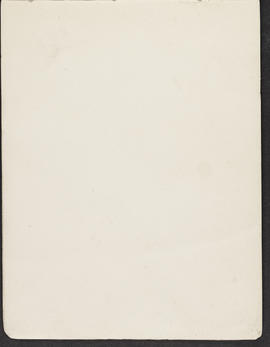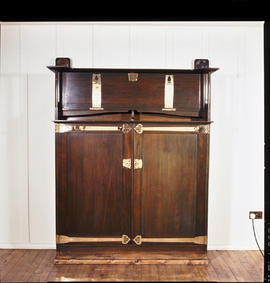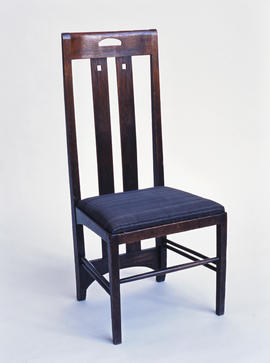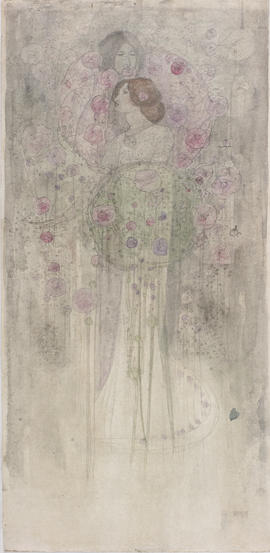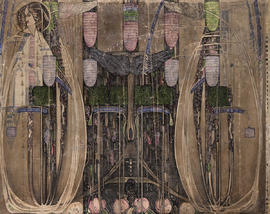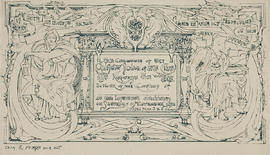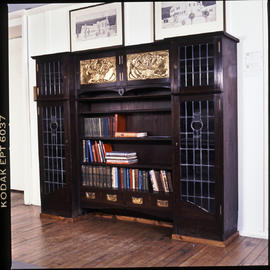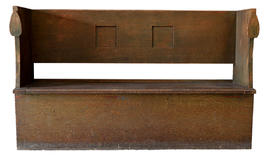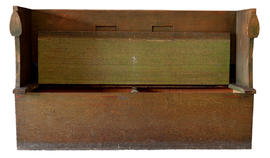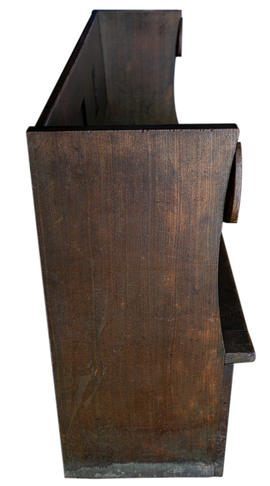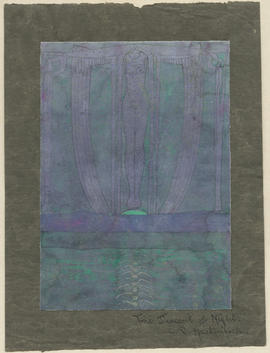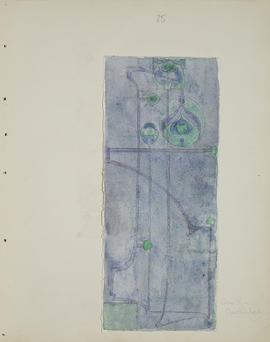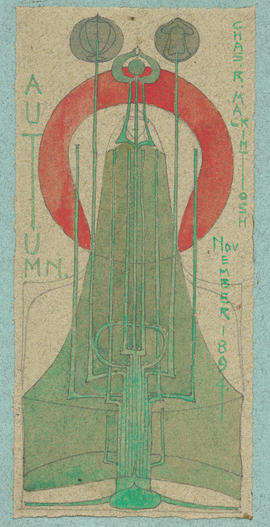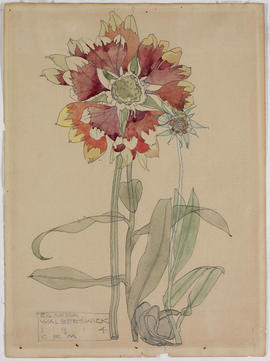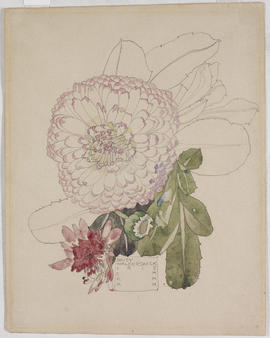- GSAA/DIR/5/38/6
- Folder
- 1906-1984
Part of Records of The Glasgow School of Art, Glasgow, Scotland
Papers of the Newbery family including papers dating to after Newbery's retirement; papers of his wife, Jessie Newbery; and documents relating to Mary Newbery Sturrock, daughter of Francis and Jessie Newbery. Papers as follows:
-
DIR/5/38/6/1: Letter from F R Benson of the Royalty Theatre, Glasgow, to Miss Newbery enclosing tickets for a Box for the play 'Much Ado', 12 Mar 1906 (1 sheet).
-
DIR/5/38/6/2: Headed letter paper of Francis Newbery, Eastgate, Corfe Castle, Dorset, c1918 (10 sheets).
-
DIR/5/38/6/3: Order of Proceedings for the inauguration of the Sign of Saint Edward, King and Martyr, Patron Saint of the Village, at Corfe Castle. Newbery made many of the readings at the event, 02 Jul 1927 (1 item).
-
DIR/5/38/6/4: Cardboard silhouette of Francis and Jessie Newbery in a photograph mount, c1930s (1 item).
-
DIR/5/38/6/5: Letters and fragments of letters from Jessie Newbery to her daughter Elsie and perhaps Mary. One of the letters to Elsie is dated 24 Sep 1934. The other letters are fragmentary and include topics such as recipes, books and sewing projects, c1934. (4 sheets)
-
DIR/5/38/6/6: Letter from George M Baltus to Mr and Mrs Newbery catching up with them following the Second World War, telling them of his experiences during that time, and telling them family news, 07 Jan 1946 (1 sheet).
-
DIR/5/38/6/7: File of photographs, pressclippings, sketches, designs, documents and letters relating to Mary Newbery Sturrock, daughter of Francis and Jessie Newbery, c1930s-80s (1 folder). File includes:
-
DIR/5/38/6/7/1: postcard of ‘Port Vendres’, watercolour by Charles Rennie Mackintosh c1926-27, dated 1979;
-
DIR/5/38/6/7/2: mounted photograph of Mary Newbery Sturrock at South Gray Street Edinburgh, undated;
-
DIR/5/38/6/7/3: letter from Mary Newbery Sturrock thanking her correspondent (name not given) for the Mackintosh card and about her memories of the doors of The Glasgow School of Art being white, 16 Oct 1984;
-
DIR/5/38/6/7/4: mounted photograph of Mary Newbery Sturrock and another woman, front of mount reads ‘Wedding’, undated;
-
DIR/5/38/6/7/5: pressclipping from the Helensburgh Advertiser about the opening of a special Mackintosh exhibition held at the Hill House, 03 May 1977;
-
DIR/5/38/6/7/6: card addressed to Mary, from ‘Pamela’ thanking her for a recent note. Front of card depicts ‘Painted gesso panel set with glass beads and shell’ by Margaret Macdonald Mackintosh, 1904, card is undated.
-
DIR/5/38/6/7/7: postcard from ‘Pat’ and Harry Barnes to Mary Newbery Sturrock, from Port-Vendres in France, 1981.
-
DIR/5/38/6/7/8: postcard from Tom Howarth to Mary Newbery Sturrock, from Port-Vendres in France, undated; photograph of Jessie and Francis Newbery; photograph of Mary Newbery Sturrock and another woman; photograph of two women, one likely Mary Newbery Sturrock, signed ‘Whiteleigh, Christmas 66’, 1966;
-
DIR/5/38/6/7/9: photographs of Mary Newbery Sturrock (x4), undated;
-
DIR/5/38/6/7/10: photographs of Mary Newbery Sturrock (x3), undated; close-up photograph of a necklace, undated;
-
DIR/5/38/6/7/11: photographs of Mary Newbery Sturrock (x2), undated;
-
DIR/5/38/6/7/12: photographs of Mary Newbery Sturrock (x2), undated;
-
DIR/5/38/6/7/13: photographs of Mary Newbery Sturrock and family (x4), undated;
-
DIR/5/38/6/7/14: photograph of Eastgate, Corfe Castle, undated; photographs of Jessie and Francis Newbery at Eastgate (x3), undated;
-
DIR/5/38/6/7/15: photograph of Jessie and Francis Newbery and family, undated; photograph of village street, likely Corfe Castle;
-
DIR/5/38/6/7/16: letter from Rodrigo Rodriguez of Cassina S.p.A to Mary Sturrock regarding the terms of an agreement between them for the reproduction of items (cutlery and the 'Six Columns Clock') designed for Sturrock by C.R. Mackintosh, 30 Oct 1979;
-
DIR/5/38/6/7/17: change of address card for Mr and Mrs A. R. Sturrock, from 2 Mansfield Place Edinburgh to 13 South Gray Street, c1945 (7 copies);
-
DIR/5/38/6/7/18: two hand-printed floral designs with addition of watercolour, unsigned and undated (possibly 1937 based on related designs); two versions of a hand-printed design with addition of watercolour depicting a woman with floral headdress, signed ‘M.N.S.’, undated (possibly 1937 based on related designs);
-
DIR/5/38/6/7/19: hand-printed floral Christmas card design with addition of watercolour and ink, back of card is signed ‘C.R., 1/-', dated 1937;
-
DIR/5/38/6/7/20: bundle of sketchbook and loose pages featuring sketches of, notes about and designs for ceramics, unsigned and undated (one example, drawn on the back of a card to Mary reads ‘wishing her good business and good health in 1956’);
-
DIR/5/38/6/7/21: invitation for exhibition of Sigrid Mavor (Ceramic flora and fauna) and M.N. Sturrock (Flower Drawings) from 30 Oct – 10 Nov at ‘The Open Eye Gallery’ Edinburgh [1982];
-
DIR/5/38/6/7/22: letter from Alison Adburgham to MNS Sturrock in response to a letter sent by Sturrock related to her family history and relationship to Liberty fabrics, 01 Jul 1983;
-
DIR/5/38/6/7/23: interview between Mary Newbery Sturrock and Tony Jones (director of GSA 1980-1986) about the history of The Glasgow School of Art, Fra Newbery and Charles Rennie Mackintosh, c1980.
Newbery, Francis Henry

